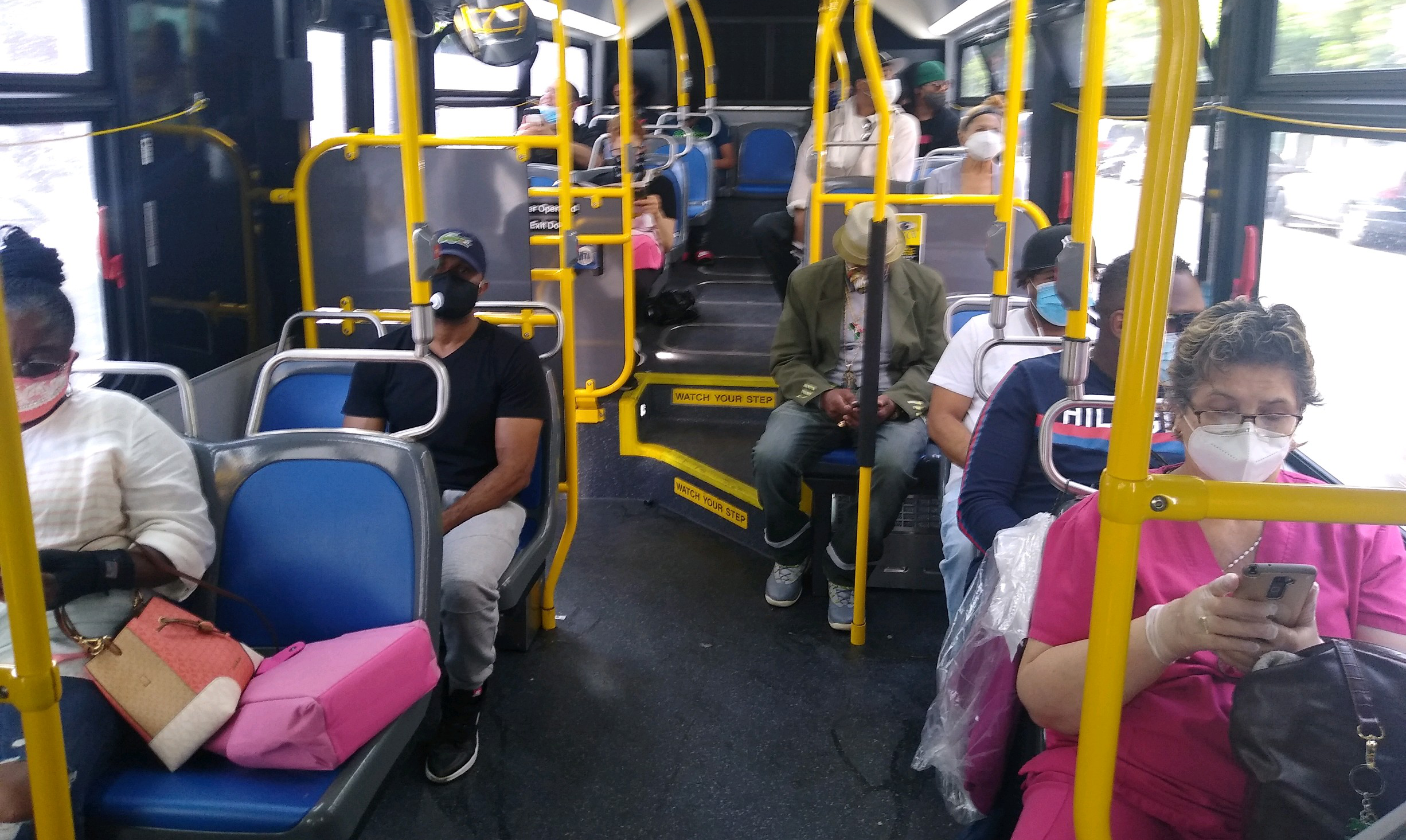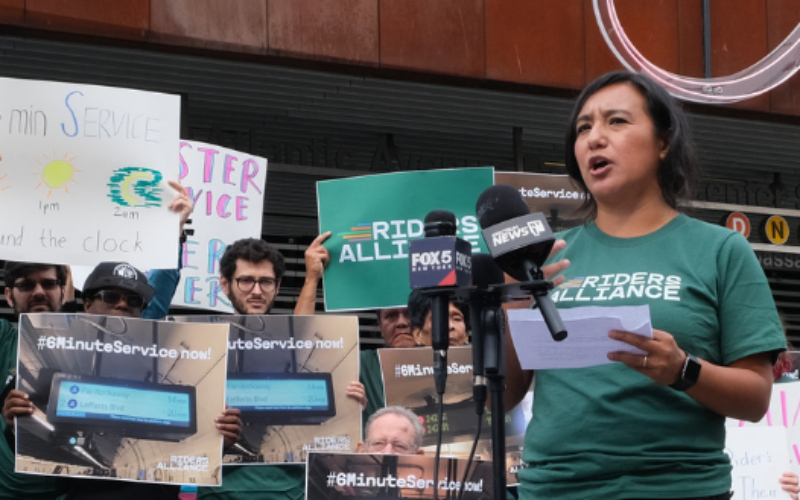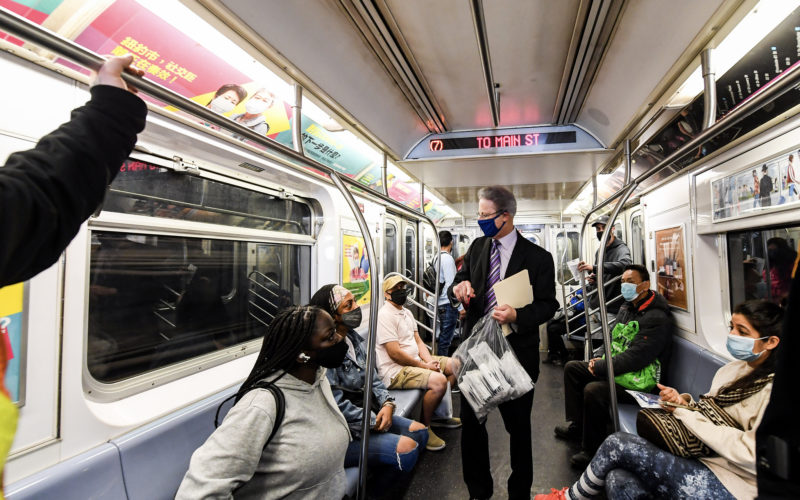
Photo: Gwyn McAllister
TransitCenter Communications Director Ben Fried delivered the following testimony at the New York State Senate’s September 29 hearing on MTA finances and operations:
From TransitCenter’s vantage point as a national foundation working to improve transit in American cities, we can safely say that COVID has spared no transit agency. Every major American transit system continues to face long-term financial uncertainty due to the pandemic. And it’s the cities where buses and trains matter most in people’s lives that COVID is causing the most trouble for transit agencies.
That’s because COVID has scrambled how people travel, and more people travel by transit in New York City than anywhere else in the country.
As the pandemic recedes, previous patterns of transit ridership may return to some extent, but it would be foolish to bet on everything going back to the way things were. The ground has shifted, and we have to adapt and improve our transportation system in response — or else the future of our subways and buses looks bleak, and so do the prospects for our entire region.
The state legislature is an important steward and oversight body for this process. New Yorkers need our elected officials to embrace the changes necessary to save our transit system. There are three things I hope you’ll keep in mind.
-
First, we need a strong congestion pricing program, with minimal exemptions, as soon as possible. Traffic congestion is a major reason our bus network is so slow and unreliable. The quicker we get congestion pricing up and running, the sooner riders will benefit from faster, more reliable bus service. Congestion pricing will also be the single largest source of funds for desperately-needed capital upgrades to make our subway system more accessible and reliable.
-
Second, we need to rethink service patterns, especially in our bus network. Office commuting and rush hour travel are down significantly, while trips by essential workers, who live predominantly in Black and brown neighborhoods, remain high. Our bus network was already woefully out of date before the pandemic. With these shifts, it’s even more imperative to redesign bus routes and schedules.
Our predicament calls for big, bold changes — and this may be jarring at first. But we have to embrace change in our bus network if we want bus service that actually meets people’s needs. I’ll add that, in TransitCenter’s observations of other cities, these types of changes work best when coupled with an expansion of the operating budget — which state legislators can help deliver.
The time has also come for changes to Metro-North and Long Island Railroad operations. For too long the schedules and fare structures for these railroads have excluded residents in the Bronx, Queens, and Brooklyn, where trains stop infrequently and the price of a trip is unaffordable. We are seeing peer railroads in Boston and Chicago adapt to pandemic conditions with service and fare changes that open up access in city neighborhoods with lower incomes. New York’s regional railroads should do the same.
- Third, the MTA will be able to do more with its capital funding if it wrestles construction costs under control. Reforms to project scoping and construction management can foster a more competitive bidding environment that will drive costs down. By using its oversight powers to identify obstacles to cost control, the State Senate can help New Yorkers get more access to great transit service for every public dollar we invest in the system.
Thank you for your time and consideration.
 Built to Win: Riders Alliance Campaign Secures Funding for More Frequent Subway Service
Built to Win: Riders Alliance Campaign Secures Funding for More Frequent Subway Service
Thanks to Riders' Alliance successful #6MinuteService campaign, New York City subway riders will enjoy more frequent service on nights and weekends, starting this summer. In this post, we chronicle the group's winning strategies and tactics.
Read More What’s Going on With Transit Service at the Seven Highest Ridership U.S. Cities? NYC Edition
What’s Going on With Transit Service at the Seven Highest Ridership U.S. Cities? NYC Edition
New York City Transit’s service levels have remained remarkably strong throughout the pandemic. Crew operator availability remains the agency’s biggest challenge, as well as adjusting weekend maintenance schedules in order to run service that matches strong weekend demand.
Read More